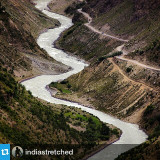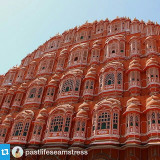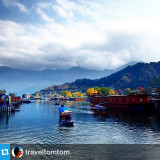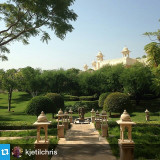Random image from our India photo collection
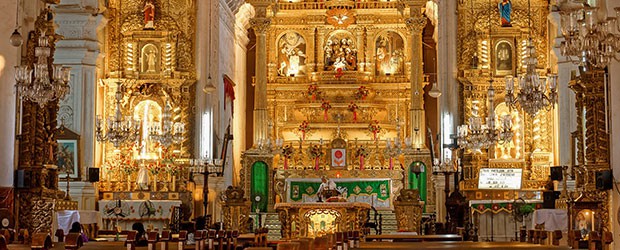
Rajasthan Tourist Centers
Mount Abu
Built between the 11th and 13th century, the Dilwara Jain temples are all the more exceptional because the marble to build these was brought all the way from Makrana and the best workmen and craftsmen were employed to ensure the finest quality of sculpture.
The Dilwara Jain temples for instance, have been compared to the Taj Mahal for their sheer elegance and beauty in marble. Intricate carvings decorate each portion of these temples, which are dedicated to the Jain Tirthankaras.
Millions of rupees were spent on the carvings, architecture and décor of the temples and the workmen were rewarded in silver and gold equivalent to the amount of marble brought in.
The Jain temple
Of the five temples - Vimal Vasahi, Lun Vasahi, Shri Risha Lhdeo, Shri Parshvanath and Shri Mahavir Swami, the first two are the most famous. One estimate states that a sum of Rs 1.2 billion was spent on Lun Vasahi itself. This temple was built by two brothers - Vastupal and Tejpal, ministers in the court of Raja Varadnawarkar, a ruler of Gujarat. They belonged to Neminath Bhagwan, the 22nd Tirthankara.
Outside the main doors of this temple, there are two statues called Devrani's and Jethani's goklas respectively, and are backed by stories of competitive jealousy of the two wives of these brothers.
Another striking feature of the temple is the marble dome in the balcony, which is made up of a cluster of half open lotuses, which appear to be almost transparent.
The Vimal Vasahi temple is older and is also known to be the first Jain temple and is dedicated to the first Jain Tirthankara. Built in 1031, by Bhim Deva, the first Solanki ruler of Gujarat, the temple is constructed in pure marble, with plain exteriors. However, its interiors are richly sculpted and house some fine examples of the accomplishments of the artists in those times.
Residents of the area will tell you that a visit to Abu cannot be complete without obtaining the blessings of Arbuda Devi, the goddess after whom Abu is said to have been named.
Arbuda Devi is stationed some 200 steps above the road, in a series of caves on top of a mountain. Along with Arbuda Devi are the statues of her three attendants.
Abu's highest peak
Guru Shikhar, the highest peak of Mount Abu, is also perhaps the most beautiful. There is certain serenity about the temple built atop this peak. The temple might just have stepped out of a fairy tale, with only a small portion in pink extending out of the plain white chalk building.
Inside is a shrine of Datta-traya, an incarnation of Lord Vishnu. Outside the temple, a little distance from its door is a huge brass bell, which stands guard overlooking the lush greenness of Mount Abu.
Another temple worth visiting is the Brahmakhadd, a Shiva temple with a difference. Here the deity is not the traditional lingam but a pit into which Lord Shiva is said to have put his foot.
Legend has it that the spot goes deep into the earth until it touches water. Outside this temple there is a statue of Goddess Parvati, and a large statue of Nandi, which still bears marks of destruction, left by invading armies.
Nakki (the lake)
In the heart of the town, at one end of the Mall is Nakki Lake, which has an interesting history. It is said that it was drawn by the finger nails of a sage, Balam Rasia, in response to the demands of the stepmother of the girl he wished to marry.
The girl, a princess, and a daughter of the then King of Abu, was also in love with the sage, but because of the evil stepmother the affair ended in tragedy, and has been immortalized in a temple of the Kunwari Kanya, alongside which stands a statue of her lover.
The lake too, has survived to tell the tale. Picturesquely set, with the hills rising all around it, the lake has several islets to which if one wants to travel, one can hire boats. An interesting facet is the many rock formations around the lake. They have been named Toad Rock, Nun Rock, Nandi Rock and Camel Rock because of their resemblance to these figures.
The road appears to be looking meditatively down towards the lake, as if contemplating of jumping in. Nun Rock is a large smooth rock, and it supposedly looks a woman with a veil. The climb up to these rocks, through the wooded forests is an unforgettable experience, with each of the rocks on the way making unique formations, crevices and shapes.
There are rumors that you might run into a bear on your way up, but the climb is well worth the risk. And one can take courage from the fact that none of the travelers in the last few years have encountered the animal.
Go back
The Dilwara Jain temples for instance, have been compared to the Taj Mahal for their sheer elegance and beauty in marble. Intricate carvings decorate each portion of these temples, which are dedicated to the Jain Tirthankaras.
Millions of rupees were spent on the carvings, architecture and décor of the temples and the workmen were rewarded in silver and gold equivalent to the amount of marble brought in.
The Jain temple
Of the five temples - Vimal Vasahi, Lun Vasahi, Shri Risha Lhdeo, Shri Parshvanath and Shri Mahavir Swami, the first two are the most famous. One estimate states that a sum of Rs 1.2 billion was spent on Lun Vasahi itself. This temple was built by two brothers - Vastupal and Tejpal, ministers in the court of Raja Varadnawarkar, a ruler of Gujarat. They belonged to Neminath Bhagwan, the 22nd Tirthankara.
Outside the main doors of this temple, there are two statues called Devrani's and Jethani's goklas respectively, and are backed by stories of competitive jealousy of the two wives of these brothers.
Another striking feature of the temple is the marble dome in the balcony, which is made up of a cluster of half open lotuses, which appear to be almost transparent.
The Vimal Vasahi temple is older and is also known to be the first Jain temple and is dedicated to the first Jain Tirthankara. Built in 1031, by Bhim Deva, the first Solanki ruler of Gujarat, the temple is constructed in pure marble, with plain exteriors. However, its interiors are richly sculpted and house some fine examples of the accomplishments of the artists in those times.
Residents of the area will tell you that a visit to Abu cannot be complete without obtaining the blessings of Arbuda Devi, the goddess after whom Abu is said to have been named.
Arbuda Devi is stationed some 200 steps above the road, in a series of caves on top of a mountain. Along with Arbuda Devi are the statues of her three attendants.
Abu's highest peak
Guru Shikhar, the highest peak of Mount Abu, is also perhaps the most beautiful. There is certain serenity about the temple built atop this peak. The temple might just have stepped out of a fairy tale, with only a small portion in pink extending out of the plain white chalk building.
Inside is a shrine of Datta-traya, an incarnation of Lord Vishnu. Outside the temple, a little distance from its door is a huge brass bell, which stands guard overlooking the lush greenness of Mount Abu.
Another temple worth visiting is the Brahmakhadd, a Shiva temple with a difference. Here the deity is not the traditional lingam but a pit into which Lord Shiva is said to have put his foot.
Legend has it that the spot goes deep into the earth until it touches water. Outside this temple there is a statue of Goddess Parvati, and a large statue of Nandi, which still bears marks of destruction, left by invading armies.
Nakki (the lake)
In the heart of the town, at one end of the Mall is Nakki Lake, which has an interesting history. It is said that it was drawn by the finger nails of a sage, Balam Rasia, in response to the demands of the stepmother of the girl he wished to marry.
The girl, a princess, and a daughter of the then King of Abu, was also in love with the sage, but because of the evil stepmother the affair ended in tragedy, and has been immortalized in a temple of the Kunwari Kanya, alongside which stands a statue of her lover.
The lake too, has survived to tell the tale. Picturesquely set, with the hills rising all around it, the lake has several islets to which if one wants to travel, one can hire boats. An interesting facet is the many rock formations around the lake. They have been named Toad Rock, Nun Rock, Nandi Rock and Camel Rock because of their resemblance to these figures.
The road appears to be looking meditatively down towards the lake, as if contemplating of jumping in. Nun Rock is a large smooth rock, and it supposedly looks a woman with a veil. The climb up to these rocks, through the wooded forests is an unforgettable experience, with each of the rocks on the way making unique formations, crevices and shapes.
There are rumors that you might run into a bear on your way up, but the climb is well worth the risk. And one can take courage from the fact that none of the travelers in the last few years have encountered the animal.
Go back


